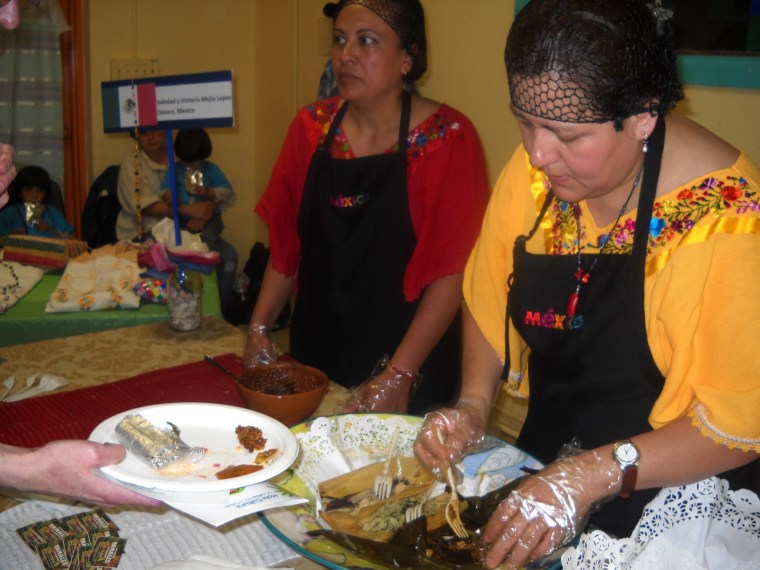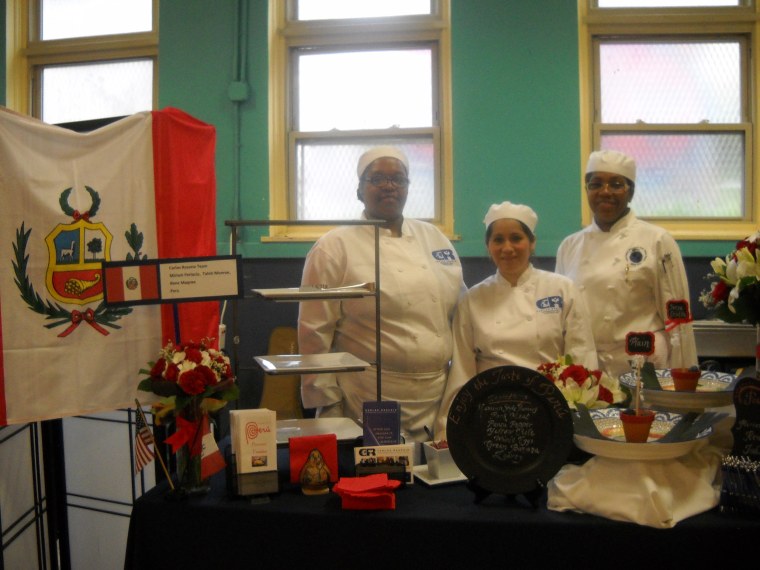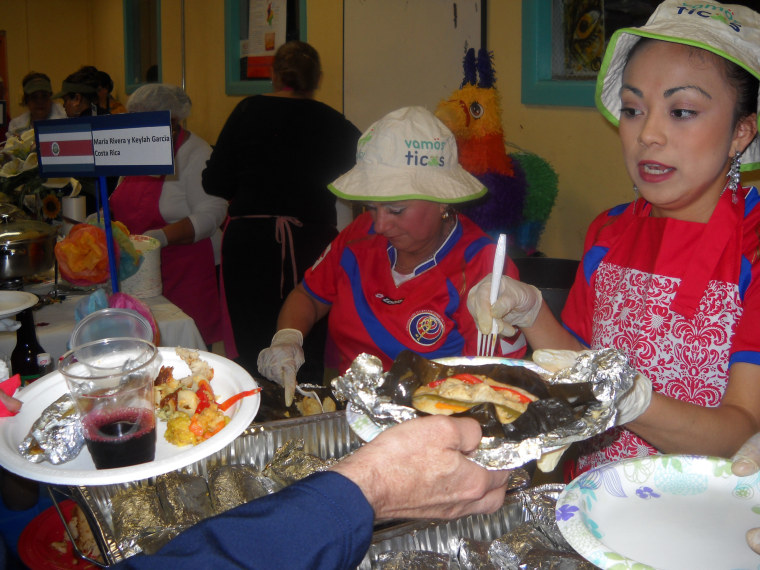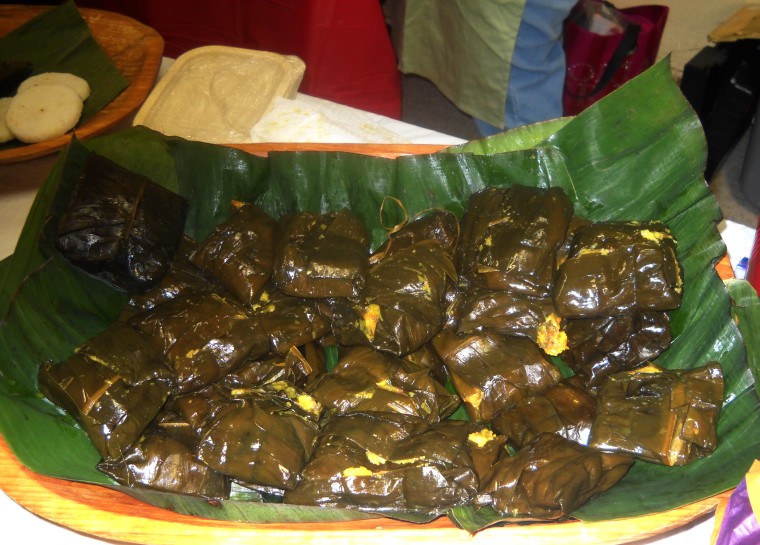By day, she’s a mail carrier with the U.S. Postal Service. By night, Victoria López is a master tamal maker, specializing in a unique variety native to her hometown of Oaxaca, Mexico.
It’s called the chepil tamal, made with a key ingredient in Oaxacan cooking, the chepil, an herb with tiny leaves that comes from a legume that can grow more than six feet tall. It has a taste that some say is similar to a green bean, while others say it’s a bit soapy tasting.

López’s chepil tamal was just one in a vast array of tamales from all over Latin America that were showcased in Washington, D.C.’s first-ever tamal festival over the weekend. (Although there are likely many families in Washington, D.C., who for years have held tamaladas - gatherings usually of families and friends for making tamales.)
“We should do as much as possible to pass on our traditions and customs to the next generation, and one way to do it is to have these kinds of events where we can show where we are from, and in addition educate those who aren’t familiar with it all. It’s the perfect way to learn,” said López, who has lived in the nation’s capital for close to 20 years and loves to cook when she’s not delivering the day’s mail.
Festival goers feasted on delectable tamales from Mexico, Guatemala, El Salvador, Costa Rica, Colombia, and Peru. All were handmade by cooks who professed passion not only for the tamal, but for wanting to share its variety, and that was particularly true for those from areas not known for their tamales.
“This is interesting because we’re going to find out about tamales from different regions,” said Concepción Ortiz Johnson, who was cooking a vegan version of the tamal from her native Zacatecas, Mexico. It included celery, spinach, carrots, cilantro, onions and poblano peppers.
Depending on the country, even the tamal wrappings are varied. Some are wrapped in banana leaves, while others use corn husks. Corn husks are more common in Mexico, while banana leaves are used in many central and south American varieties.
The Peruvian tamal is slightly different than others, using for its dough ground-up white corn as opposed to yellow corn. Besides the requisite filling of pork, chicken or beef, a Peruvian tamal includes black olives and either ají amarillo (yellow chili peppers with a hot and fruity taste combination) or ají panca, a dark red mild pepper with a smoky, fruity taste. Other ingredients include eggs, and an item largely atypical in tamales: peanuts.
“I feel like I am an ambassador of Peruvian cuisine. Little by little, people are getting to know Peruvian food, but not too many know about the Peruvian tamal,” said Miriam Perlacio, a native of the Peruvian capital city of Lima.

Perlacio has been in the Washington area for 12 years and is currently studying to be a chef. “I would like to one day have my own catering business and maybe open up a Peruvian restaurant, and I’m definitely including the Peruvian tamal in my plans,” said Perlacio, who with her teammates Tahiti Monroe and Renee Monroe made up the Carlos Rosario Culinary Academy team.
Costa Rica is another country where tamales fly under the radar – they’re not as well-known as other cuisine, even though the tamal dates back to pre-colonial times.
María Rivera wants to change that. The native Costa Rican and housewife loves to cook and on special occasions is known to contribute several kinds of dishes, including the Costa Rican tamal.
“I got up at the crack of dawn and with a little help made 180 tamales for the festival,” Rivera laughs. “This is a good way for people to find out about the Costa Rican tamal.” The major difference between a Costa Rican tamal and tamales from other countries is that this one includes a lot of rice as its main ingredient. Other ingredients include garbanzo beans and potatoes.
Like many of the other festival cooks, Rivera dreams of getting into the food business. “One day I’d like to open up a catering business or a restaurant here in Washington specializing in Costa Rican food. That’s my goal.”

The festival was organized by Hola Cultura, a non-profit group in the Washington area that promotes the arts and culture of Latin America and U.S. Latinos. The idea for the festival came about after asking around and finding a lot of variety among such a quintessential Latin American food item, says Hola Cultura director Alberto Roblest.
“We asked people, what is the most you miss from your homeland, and the number one answer was the food, and many said they miss the tamal. So we said let’s get together and talk about the tamal. The tamal is one food found in so many different countries, but made so differently depending on where you’re from. This is one time when highlighting differences is a good thing,” Roblest said.
El Salvador is famous for its pupusas – the thick handmade tortillas filled with cheese or other ––ingredients – but tamales are also a big part of its cuisine. “The major difference between the Salvadoran tamal and some of the more well-known tamales especially from Mexico, is that the Salvadoran one is not spicy,” said Norma Castro Flores, a native of El Salvador who’s been living in Washington, D.C., for more than 20 years. “Our tamales don’t have any of the chiles the others do. Plus we use a lot of beans, such as red beans and garbanzo beans. Our tamal is mild, but it’s good!”
Held to a packed house in the basement of a local church in the largely Latino neighborhood of Columbia Heights, patrons gave it a thumbs up.
“I’m here because this was my comfort food growing up in Mexico, and I wanted to feel that connection,” said María Barrera, a festival goer. June Galloway says she grew up in California eating one version of tamales and had no idea there was a variety. “I’m happy to learn about it. This is great.”
Perlacio's team won a festival award for best presentation.
Hola Cultura’s Roblest said that while his group plans on more tamal festivals, the next food festival under consideration is an empanada gathering. “That’s another food item that’s so common yet so different. That’ll be a good one too.”
Related: It's National Empanada Day
The Web and various cookbooks are filled with recipes. Tamale makes will tell you getting the masa right is key. The University of Vermont's Continuing and Distance Education has a traditional Oaxaca recipe for Tamale Chepil on its site.
